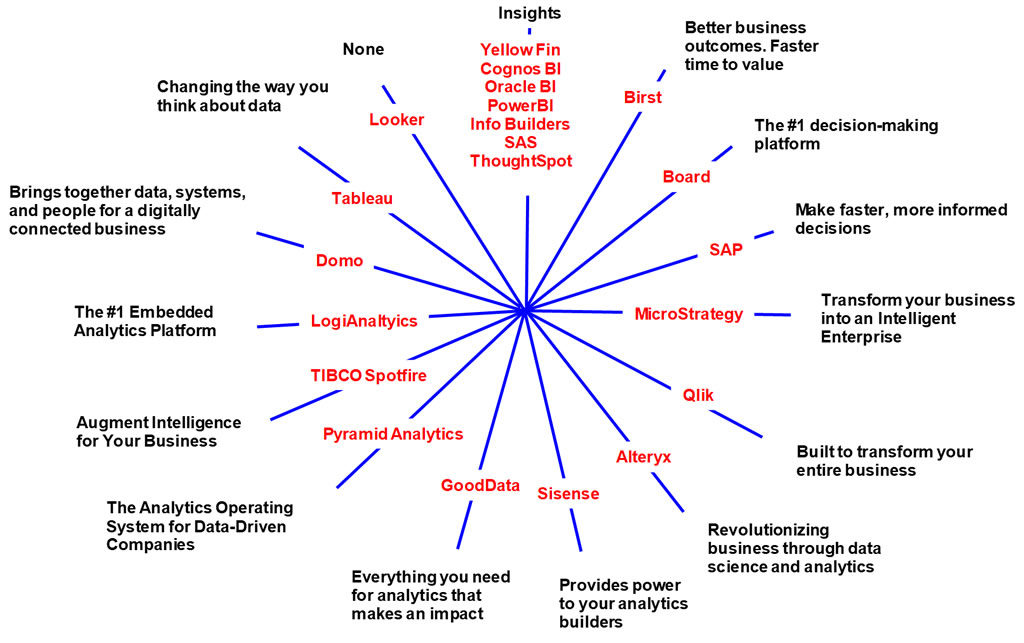“Me too” positioning is surprisingly common in the B2B software industry. It can have a negative impact on lead levels, sales team efficiency, selling cycle times and prospect pricing pressure.
You can avoid “me too” positioning by creating a perceptual map that makes it easy to see how you are positioned relative to your competitors.
Here is an example of a perceptual map for the Business Intelligence software market:

To determine a position for each company, I look for a claim that stands out on homes pages, product pages, about pages and solution pages. Ideally the claim is repeated throughout the site.
A positioning statement frequently appears prominently on the home page or in the first or last paragraph (or both) of any marketing communication. A good one should contain a concrete benefit that addresses a real business challenge. For each competitor, analyze as much marketing communications as possible including websites, e-mails, brochures and press announcements.
After I determined the positioning for each product, I input my findings into a custom-developed Excel application that automatically created the perceptual map above:

Lack of differentiation in B2B software has always been a problem and it is more so today because many companies in a market have similar functionality. How do you differentiate when you aren’t different?
This blog explains my approach to today’s differentiation dilemma.
